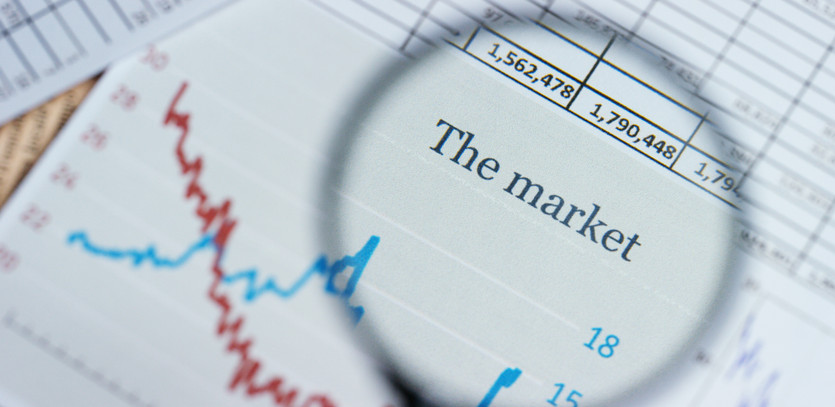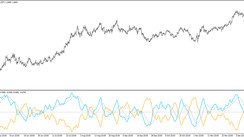In the fast-paced, ever-changing landscape of trading, it's essential to have tools and strategies that allow you to navigate the markets with confidence and precision. One such tool that often goes unnoticed but plays a vital role in the daily life of a trader is the economic calendar. While it might only take a minute of your time daily, that fleeting moment is the compass leading to success in trading.
Key Insights
To quickly grasp the importance and functionality of the economic calendar, here are some pivotal highlights:
- Economic calendars provide a concise view of scheduled news events or data releases related to the economy and financial markets.
- High-impact events, often marked in red, trigger volatility and demand attention.
- Slippage risks during high-impact data releases can be effectively managed with a comprehensive understanding of the economic calendar.
Understanding the Economic Calendar: Your Trading Roadmap
What is an Economic Calendar?
An economic calendar is not just a list of dates; it's a critical guide to the financial world's heartbeat. From new GDP growth rate figures to the latest non-farm payroll numbers and fluctuating interest rate decisions, the calendar offers a plethora of information.
Frequency of Economic Events
Unlike any ordinary calendar, the economic calendar is bustling with activity. It's not uncommon to find at least one significant economic data release every week, and sometimes even daily during particularly busy trading weeks. The frequency and variety of these releases emphasize the need to stay aligned with the calendar.
Weekly Overview
- Monday to Friday: Regular updates on economic indicators and market-moving news.
- Weekend Review: Reflect on previous events and prepare for upcoming ones.
Event Grading System
The economic calendar doesn't merely list events; it grades them, acting as a weather forecaster for the financial climate. Depending on the website used, these gradings are:
- Low Impact Events: These are minor events that may be marked as "Low" or unmarked, having minimal market impact.
- Medium Impact Events: Marked with a yellow dot or star, signaling that some caution is warranted.
- High Impact Events: Red stars, dots, or "High" markings signify news/data releases that are highly likely to move the market significantly.
Managing the Risks of High-Impact Data: Navigating the Market Storm
In the tumultuous seas of financial markets, high-impact data can conjure unexpected storms. Being aware of these events and knowing how to manage the risks associated with them is akin to having a skilled captain at the helm of your trading vessel. Let's take a deeper voyage into this critical aspect of trading.
The Nature of High-Impact Events
High-impact events are those bold, glaring indicators often marked in red on an economic calendar. They're not merely warnings; they are sirens calling attention to significant market movement. These are the instances where the stakes are high, and the market's reaction can be fierce and unforgiving.
Examples of High-Impact Events:
- Interest Rate Decisions: Central banks' decisions on interest rates can sway currencies and bonds dramatically.
- Non-Farm Payroll Numbers: Employment data often sends ripples through the stock and forex markets.
- Economic Policy Announcements: Government fiscal policies can reshape market landscapes overnight.
Market Reactions: The Storm Before the Calm
Understanding Market Volatility: The market doesn't wait to react to these events; it dances to their rhythm. Volatility is expected, embraced, and even feared by traders around these events.
- Above Expectations: If the data comes out better than expected, bullish reactions may follow.
- Below Expectations: Conversely, disappointing figures can lead to bearish market responses.
- In Line with Expectations: Even if the data aligns perfectly with market expectations, the waters may not remain calm. The anticipation itself can churn the market.
Traders' Defensive Strategies:
- Retreat: Some traders may choose to sit out, canceling pending orders to avoid the volatility.
- Advance with Caution: Others may adjust strategies, tightening stop-loss or taking other precautionary measures.
Liquidity Drop: The Ebbing Tide Before the Wave
Sudden Drops in Liquidity: This momentary step back by traders leads to a sudden drop in liquidity right before a market-moving event occurs. It's the ebbing tide before the wave.
- Fewer Orders: With fewer orders available to absorb market buy or sell orders triggered by the event, the price may whip back and forth.
- Price Whipsawing: This phenomenon, known as "whipsawing," is a quick and often violent price movement in both directions.
How to Navigate:
- Preparation: Understanding the nature of high-impact events helps in formulating a response strategy.
- Real-Time Analysis: Utilizing real-time tools and insights can guide immediate decisions.
Conclusion: Steering Through the Storm
Navigating the turbulent waters of high-impact data is not for the faint-hearted. It requires vigilance, agility, and an unwavering commitment to strategic risk management. The economic calendar is more than a tool; it's a seasoned guide through these market storms.
- Awareness: Be aware of the events, their potential impact, and the market's historical reaction to similar news.
- Adaptability: Be ready to adapt strategies in real time, capitalizing on opportunities or minimizing losses.
- Execution: Execute with precision, utilizing the insights and strategies honed through understanding and experience.
In the final analysis, the successful navigation of high-impact data comes down to awareness, adaptability, and execution. Just as a seasoned sailor reads the winds and tides, a skilled trader reads the market, allowing the economic calendar to steer the course toward profitable horizons.
Using the Economic Calendar to Minimize Risk: Strategies for Safety
Daily Routine
- Morning Check: Make it a daily habit to review the economic calendar and note the times of major data releases. This practice sets the stage for a successful trading day.
Knowing Your Risk
- Define Risk Parameters: Typically, the risk on each trade—defined as the difference between your entry price and stop-loss price, multiplied by the position size—should be less than 2% of account equity, ideally 1% or less.
- High-Impact Data Considerations: However, when high-impact data is released, this equation can change dramatically. A planned 1% risk trade might escalate to a 5% loss due to slippage.
Professional Practices
- Timing Your Trades: Many professional day traders strategically close out their forex, stock, or futures positions three-to-five minutes before the high-impact data's release and abstain from new trades until afterward.
Options Trading
- Understanding Options: If you trade options, risks are defined and capped—the premium you paid is the potential loss. While slippage may occur, you can't lose more than the premium you paid, providing a unique safeguard in the trading world.
Economic Calendars for Various Markets: Tailoring Tools to Your Needs
The world of trading is diverse, and so are the tools. Different markets demand specific economic calendars:
- Forex and Options Traders: Websites like dailyfx.com/calendar cater to these markets.
- Stock Options Traders: The US earnings calendar provides critical insights, as earnings have a substantial impact on price, much like economic data releases.
Economic Calendars for Various Markets: Tailoring Tools to Your Needs
In the vast landscape of financial trading, different markets possess their unique rhythms, characteristics, and demands. Each market, whether it's forex, futures, or stocks, requires specialized tools to navigate. The economic calendar serves as a universal compass, but it must be fine-tuned and adapted to suit the peculiarities of each trading realm. Let's delve into this indispensable tool's multifaceted applications across various markets, demonstrating how to tailor it to your specific needs.
Understanding the Diversity of Markets
Markets are as varied and complex as the ecosystems of our planet. Each has its unique characteristics, trends, and sensitivities. Recognizing the specific needs of each market is the cornerstone of crafting a tailored trading strategy.
Different Markets and Their Calendars:
- Forex: A market that never sleeps, where currency pairs ebb and flow with global economic news.
- Futures: Commodities and derivatives markets that respond to both micro and macroeconomic variables.
- Stocks: A market influenced by company earnings, national economic indicators, and broader market sentiment.
Tailoring Economic Calendars to Different Markets
The application of economic calendars isn't a one-size-fits-all endeavor. Tailoring them to the market you trade in is essential for optimizing performance. Here's how you can adjust your compass to the winds of different markets:
For Forex Traders:
- Global Perspective: Keep an eye on central bank decisions, inflation data, and global economic indicators.
- Precision Timing: With forex, timing is everything. Note the exact release times of critical data.
- Website Resource: Utilize specialized tools such as dailyfx.com/calendar to stay attuned to the forex world.
For Futures Traders:
- Commodity Sensitivity: Understand the impact of weather, political decisions, and supply chain disruptions.
- Contract Expiry Dates: Note the expiration dates of contracts and align strategies accordingly.
- Leverage Technology: Employ cutting-edge tools that offer real-time data on various commodities.
For Stock Traders:
- Earnings Calendar: Company earnings can be pivotal. Monitor the US earnings calendar to keep abreast of influential reports.
- Sector Analysis: Recognize how different sectors react to economic news and tailor your approach.
- Risk Management: Understand market liquidity and align your strategies to mitigate adverse price movements.
Conclusion: Crafting the Perfect Instrument
Tailoring an economic calendar to your specific market is akin to crafting the perfect musical instrument; it must resonate with the rhythm and harmony of the market. With each adjustment and refinement, it becomes a more effective tool, enhancing both understanding and performance.
- Customization: Customize your economic calendar, focusing on the events that matter most to your trading world.
- Integration: Seamlessly integrate the calendar with other trading tools for a holistic approach.
- Education: Continually educate yourself on market-specific news and events, turning information into insight.
By molding the economic calendar to the unique contours of your chosen market, you sculpt a masterful tool that serves your trading ambitions. This tool doesn't merely track time or events; it's a dynamic guide, a tuned instrument that dances to the beat of the markets you explore. Whether it's the rapid currents of forex or the steady ebb and flow of stocks, your tailored economic calendar becomes an extension of your trading prowess, steering you toward informed decisions and profitable paths.





